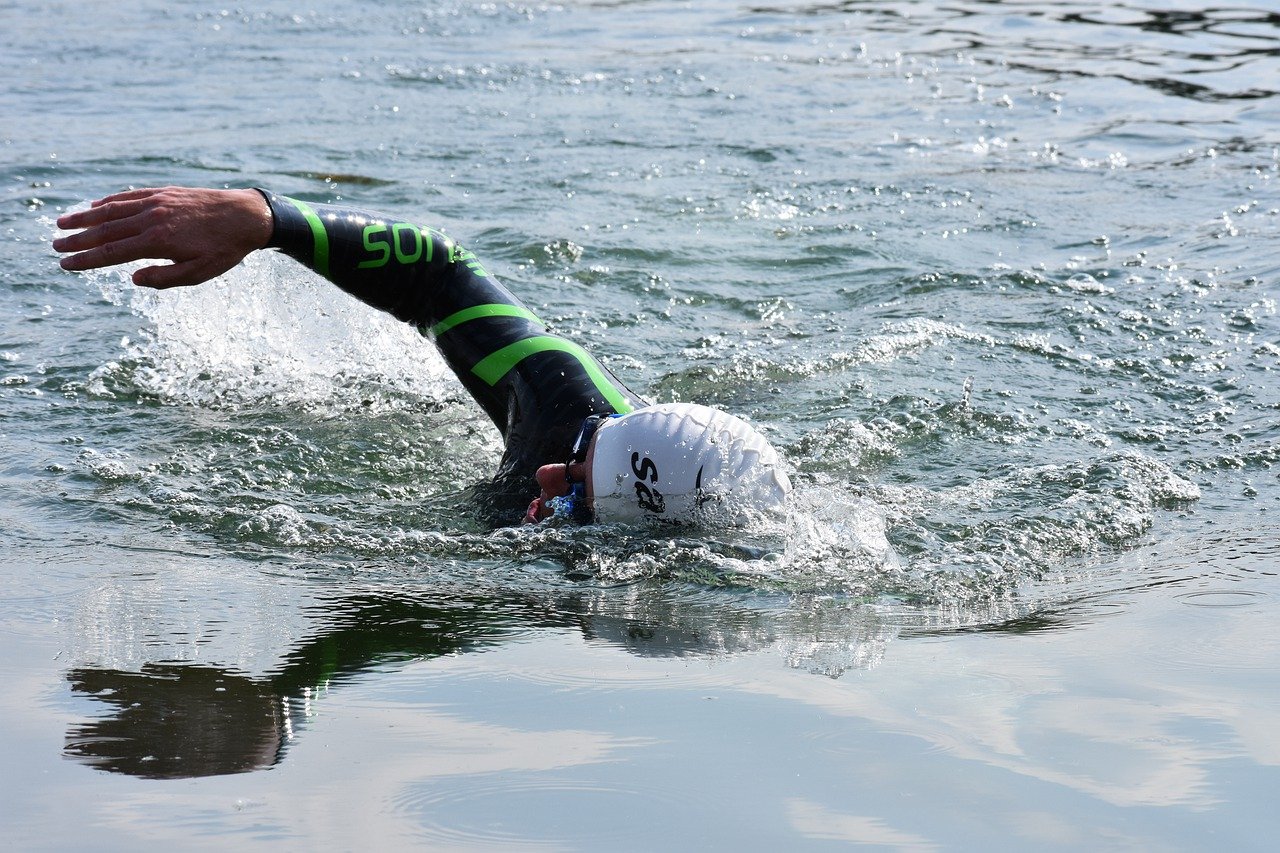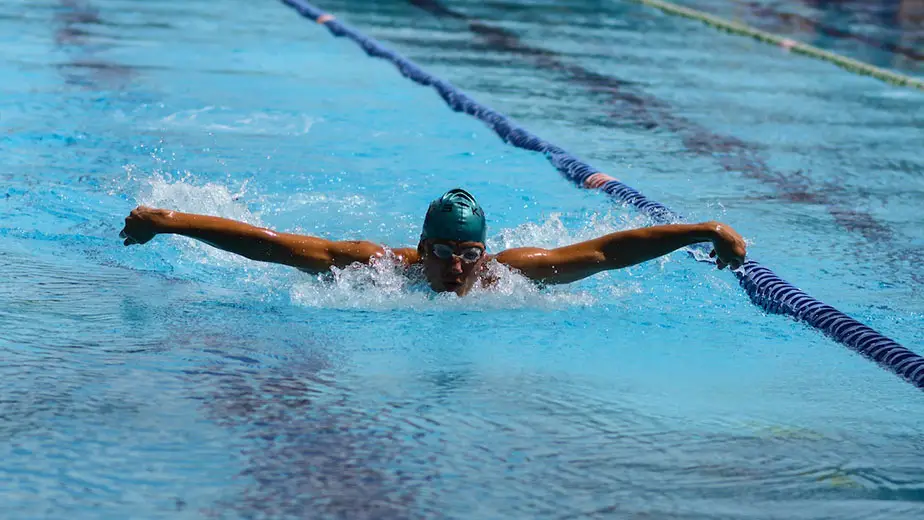There are many great reasons to wear a swim cap while swimming. However, the most sought after benefit is the speed improvement it provides. Skeptical swimmers wonder just how much of a time improvement wearing a piece of fabric over one’s head provides, if any. Are all competitive swimmers wasting their efforts wearing a swim cap in competitions, or is there something to it?
According to this study, in 25-yard freestyle sprints, silicone swim caps provided a 0.29 second improvement over no cap, latex caps provided 0.19 seconds of improvement over no cap, and lycra provided a 0.09 second improvement over no cap. That might not seem like much, but a few tenths of a second might be the difference between first or second place.
While not the point of the study, it supports what we already know – that wearing any swim cap at all improves time compared to no cap. Keep reading on to learn more about why wearing a swim cap saves time and why even the cap material matters.
How does a swim cap save time?
For optimal hydrodynamics, swimmers should shave or cover up their body hair because each strand of hair increases their surface area and increases the resistance, or drag, they will encounter. This is true on land where there is wind resistance, as it is true underwater with water resistance.
To be clear, this means shaving your arm hair, leg hair, and torso hair. Men should also shave their facial hair. Most people are reluctant to shave their head bald just for their sport, especially women, which is why swimming caps exist. Some people go all the way and even shave their heads anyway, just in case. Why go so far?
Multiple studies have shown that swimmers who shaved their body hair found not just physiological benefits, but psychological benefits as well, which significantly improved their overall performance in the water. (I.e. they not only felt faster, they were faster).
Each strand of hair that isn’t covered up is just extra surface area that increases resistance. Not only does resistance slow you down, but it requires more effort to overcome, increasing lactic acid build up and causing you to tire faster. Consistent training can improve your lactic acid threshold so that you don’t feel the burn as much. Or you could just shave your hair.
In one of the aforementioned studies, it was found that the “decrease in blood lactate as a result of shaving amounted to 23%. Thus, it can be said that within these subjects the effect of shaving was nearly as great as an entire season of training.” Researchers noted that in previous studies, that number was as high as a 27-35% reduction in lactic acid buildup for the distances swam.
Another study found that being clean shaven improved a swimmer’s distance by 5% per stroke. This lines up with the findings that there is less lactic acid buildup due to being clean shaven and wearing a cap because each stroke propels swimmers a further distance, meaning they can finish the laps in less strokes, thereby conserving energy and keeping lactic acid low.
The longer the race, the more time you save

You might think that a time savings of only a few tenths of a second is so minuscule that it doesn’t even matter. However, the times provided in the introductory paragraphs was for a 25-yard sprint. Imagine how much of an impact wearing a swim cap and being clean shaven does over a longer race, especially something like a triathlon.
As mentioned, not only does streamlining your body increase the distance traveled by an extra 5% per stroke, but this also translates to less lactic acid buildup and therefore less fatigue over a longer period.
Think about how much time and energy one could save in a 400m race, or 800m, 1500m, or a triathlon. What was only a few milliseconds of difference could translate into entire seconds over a longer race, or maybe even minutes in a triathlon.
Swim cap material and design matters
It was never in dispute that swim caps and being clean shaven improved a swimmer’s time. In fact, we knew this all the way back in the 50s, even if we didn’t have exact numbers.
However, what has been in debate is which swim cap material is the best? Does it even make a difference? Yes, it absolutely does. And as we’ve established, even a tiny bit of time saved can translate to huge time-savings over a longer race.
The three most commonly worn swim caps are lycra swim caps, latex swim caps, and silicone swim caps. Of these three, which one reigns supreme? Again, in the study mentioned in the introductory paragraphs, it was found that silicone swim caps provided the greatest reduction in time at 0.29 seconds, latex by 0.16 seconds, and lycra at 0.09 seconds.
Another study corroborates these findings. The study measured and compared how much drag a swimmer experienced when wearing a lycra swim cap, a silicone swim cap, and a silicone swim cap without seams. It was found that the silicone cap with seams and lycra swim cap performed about 5-6.5% worse than the silicone swim cap without seams.
What explains these differences? The researchers believe that silicone is the most rigid of the three swim caps, it streamlines the head shape the most, and does not produce any wrinkles that increase the surface area unlike the other swim caps tested.
The conclusion that we can draw from this study is that choosing the right swim cap is crucial if swimmers want the best times. You want a silicone swim cap without seams to streamline your head shape the most to save the most time.
In a sprint, this can lead to an improvement of a few milliseconds, to entire seconds in a longer race. That will make the difference at the highest levels of competition.


